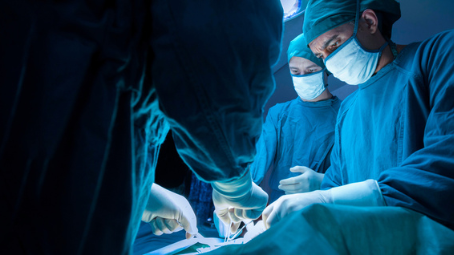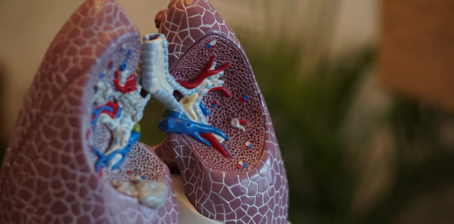
Removing a healthy organ to protect yourself from cancer
We are not all equal when it comes to cancer. Some people are genetically predisposed to cancer. This raises the question of surgery: should an entire organ be removed to protect oneself?
We are not all equal when it comes to cancer. Some individuals have a predisposition and are carriers, in their genetic heritage, of one or more abnormalities promoting certain cancers called "pathogenic variants". These are abnormalities (one or more mutations in specific genes) that are usually transmitted by one of the two parents and are present from the first to the last day of life.
These pathogenic variants are usually not found by chance: they are already identified in a patient affected by cancer. Family members can then undergo genetic testing to find out if they are also carriers, as part of a specialized consultation.
Following a genetic screening, some people find themselves at a significant risk of developing cancer in the years to come. The question of surgery may then arise: should one consider having a whole organ removed - stomach, thyroid, breasts or ovaries for example - to protect oneself?
The question is all the more important because these people are in perfect health at the time they have to make this choice and the cancer will not necessarily occur. This is called prophylactic surgery. Here are the most emblematic examples.
Stomach Cancer…
Pathogenic variants in the CDH1 gene are associated with an increased risk of developing a type of stomach cancer called diffuse, or "loose cell" gastric cancer. The risk begins in young adults and rises to 30-40% over a lifetime. This cumulative risk is considered sufficient to justify surgery, especially since screening methods are limited.
CDH1 encodes an adhesion protein, E-cadherin, whose role is to ensure the integrity of gastric tissue. If there is a pathogenic variant in this gene, the protein no longer functions normally and the tissue integrity of the organ is compromised, with a risk of uncontrolled cell proliferation.
Detection of diffuse gastric cancer is difficult. Indeed, this cancer is not always visible with gastroscopy, a procedure that consists of inserting a tube equipped with a camera into the stomach. Even though the performance of gastroscopy has improved considerably in recent years, thanks to virtual staining and magnification techniques.
Is surgery necessarily to be considered? Opting for a rigorous follow-up is not to be ruled out, especially when the risk of cancer is well below 100%, not to mention the hope of short-term progress in screening. Nevertheless, only prophylactic surgery guarantees protection against CDH1-related gastric cancer. It is considered from the age of 20 years.
… Living without a stomach
An adult life without a stomach is quite possible... but at the price of an altered quality of life and a long-term medical and nutritional follow-up.
Of course, surgeons reconstruct a "reservoir" from a piece of intestine, but this only partially compensates for the absence of the organ. A loss of about 15 percent of body weight is observed in the year following the operation. Some people describe a disappearance of the feeling of hunger and the pleasure of eating.
Living without a stomach means that meals have to be split up, so that small quantities are eaten more often. Discomfort may occur during the meal.
Early discomfort is related to the fact that the food bolus is no longer stored in the stomach and that the intestine is not designed to accommodate large volumes in a short period of time. Later on, episodes of hypoglycemia can be observed: the accelerated passage of food into the bloodstream first increases blood sugar levels rapidly, which causes the body to secrete large quantities of insulin... which will rapidly lower blood sugar levels, sometimes excessively.
The absence of a stomach also leads to deficiencies in vitamins and other essential elements: for example, a factor secreted by the stomach that is necessary for the absorption of vitamin B12, which is involved in the manufacture of red blood cells and the function of nerves. The surgical set-up and accelerated passage of digested food through the digestive tract also compromises the absorption of vitamin D and calcium (essential for skeletal strength) and iron (necessary for red blood cell production).
[Nearly 70,000 readers trust The Conversation newsletter to better understand the world's big issues. Subscribe today (in French)]
Children sometimes affected
Unfortunately, age is not always relevant: there are genetic predispositions that require early surgery.
For example, multiple endocrine neoplasia type 2 is an inherited disease defined by the existence of pathogenic variants of the RET gene. It can affect three endocrine (hormone-secreting) glands in the body: thyroid, adrenal medulla and parathyroid. But it is mainly characterized by a risk of aggressive thyroid cancer, medullary cancer.
The risk varies according to the position of the pathogenic variant in the gene. For some variants, the risk starts in the first years of life and approaches 100% in adulthood. It is then strongly recommended to remove the thyroid, sometimes in very young children. Thyroid hormone replacement is then administered for life. This substitution prevents the consequences of hypothyroidism: growth impairment and developmental delay in children, fatigue, psychomotor retardation, weight gain and cold intolerance in adults.
We have presented two particularly striking examples of genetic predisposition to cancer, due to the consequences of surgery and the age at which it is performed. But these examples are rare: it is estimated that only one person in 5000 carries a pathogenic variant of the CDH1 gene.
Let's now turn to a predisposition that affects about 1 in 500 people: the genetic predisposition to breast and ovarian cancer, which has been publicized for the last ten years by Angelina Jolie.
Breast and ovarian cancer
BRCA1 and BRCA2 are the main predisposition genes for breast and ovarian cancer. The lifetime risk for a carrier is approximately 70% for breast cancer, and 20-40% for ovarian cancer. Prophylactic breast surgery consists of removal (mastectomy) followed by reconstruction by a plastic surgeon.
It is important to note here that breast removal is an option, as there are effective means of screening. Surgery is therefore discussed in the same way as annual monitoring by radiological examinations, magnetic resonance imaging (MRI) and mammography.
If the woman wishes to avoid this high risk of breast cancer, or finds surveillance restrictive and anxiety-provoking, she may decide to have surgery. Surgery is possible from the age of 25-30.
For the ovaries, however, prophylactic surgery is strongly recommended from the age of 40-45. Unlike the breasts, there is currently no effective screening tool for ovarian cancer.
The immediate consequence of ovarian surgery is menopause, as the woman is deprived of her main source of female hormones. Hormone replacement therapy is offered under certain conditions.
It is important to remember that men who are carriers of BRCA1 or BRCA2 pathogenic variants are also at risk of breast cancer. BRCA2 carriers are also at risk for prostate cancer. Prostatic prophylactic surgery is not normally considered, although this possibility has been discussed. Its consequences would be severe, mainly impotence and incontinence. In addition, there are means of screening by measuring blood markers, and perhaps soon by MRI.
Social and psychological impact
The choice of prophylactic surgery is influenced by the perception of the genetic syndrome and by the personal and family history of the person concerned.
Before surgery, it may be useful to take time to reflect, to turn to patient associations and to seek support from a mental health professional. Indeed, the impact of surgery is not only physical: it is sometimes also social and psychological.
For an invisible organ such as the stomach, the postoperative weight loss is apparent and can raise comments and questions. The splitting of meals and discomfort can have an impact on social life. A woman considering breast and ovary removal may fear losing a part of her femininity. Breast reconstruction often provides excellent results. However, sometimes the new breast does not match the one before the surgery and a new body image must be adapted to.
Progress in screening
Despite this, prophylactic surgery remains the best way to protect oneself from certain cancers, in case of predisposition.
In the medium term, we can hope for progress in screening, thus offering safe alternatives. Young CDH1 carriers would then be able to keep their stomachs in complete serenity, allowing them to eat as they wish and without risk of deficiencies. Women aged 40 or 45 would keep their ovaries despite a predisposition linked to BRCA1 or BRCA2, and would be naturally menopausal in their fifties...
Medicine is evolving. See you in a few years for a new light on prophylactic surgery?
Camille Desseignés, genetic counselor at the Pitié-Salpêtrière Hospital, AP-HP, contributed to this article..
Patrick Benusiglio, associate professor and Hospital Practitioner at AP-HP, Sorbonne University, specialist in genetic predisposition to cancer
This article is republished from The Conversation under a Creative Commons license. Read the original article.
![]()


